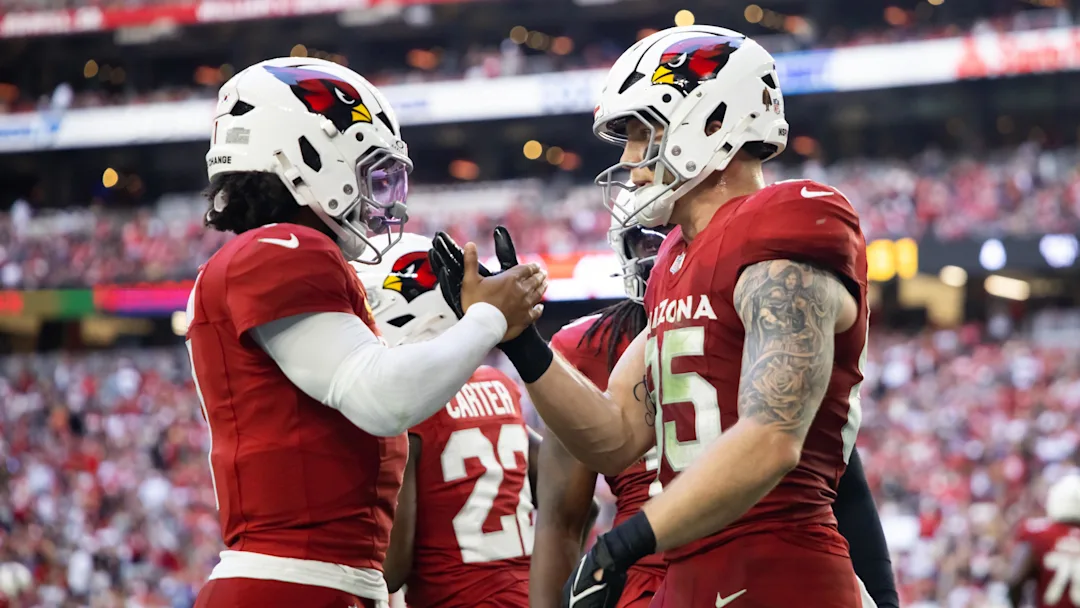In a league defined by parity and unpredictability, offseason rankings are often met with skepticism. Still, they spark conversation, stir emotions, and sometimes — as in the case of the Arizona Cardinals — leave entire fanbases and locker rooms fuming. This week, an NFL roster ranking dropped that sent shockwaves through the desert. The Cardinals, a team on the rise with a new culture and several promising pieces, found themselves near the bottom of the list. And Arizona fans aren’t happy.
The ranking, published by a national sports outlet known for its analytical approach, placed the Cardinals’ roster 29th out of 32 teams. That’s right — according to the metrics and scouting opinions presented, only three NFL teams boast less talent than the Cardinals heading into the 2025 season. The news was met with a mix of disbelief, frustration, and a rallying cry among players and fans alike. And for good reason.
First, it’s important to acknowledge the Cardinals’ trajectory. While 2023 was a rebuilding year and 2024 saw incremental progress under head coach Jonathan Gannon, the franchise showed enough grit and potential to suggest better days were ahead. Quarterback Kyler Murray returned from injury and flashed moments of brilliance. Rookie wideout Marvin Harrison Jr. lived up to the hype, providing an explosive spark that the offense had sorely lacked. The defense, though inconsistent, had emerging playmakers like Budda Baker and Zaven Collins making strides. The pieces are there — maybe not to contend for a Super Bowl just yet, but certainly to compete and improve.
So why the disrespect?
The ranking focused on positional depth and overall roster talent, but critics argue it severely undervalues the Cardinals’ young core and potential breakout candidates. Kyler Murray, while still polarizing to national pundits, has been a dynamic dual-threat quarterback when healthy. His leadership in the second half of the 2024 season was a critical reason Arizona closed the year strong. The ranking’s accompanying analysis suggested Murray’s ceiling “may have already been reached,” an opinion that feels both short-sighted and dismissive of his skill set, especially with a revamped offensive line giving him better protection.
Then there’s Marvin Harrison Jr., arguably the best wide receiver prospect in a generation. After a sensational rookie season in which he tallied over 1,100 receiving yards and eight touchdowns, Harrison established himself as a legitimate WR1. Yet, the ranking downplayed his impact, labeling the Cardinals’ receiver group as “underdeveloped” outside of Harrison. While it’s true that depth remains a concern, the emergence of second-year receiver Michael Wilson and the steady presence of tight end Trey McBride provide complementary options in the passing game. The idea that Arizona lacks skill position talent feels increasingly outdated.
Defensively, the Cardinals made significant strides in 2024. Though still a work in progress, the defense showed flashes of dominance, especially in the final month of the season. Budda Baker remains a tone-setter in the secondary, and the growth of linebacker Zaven Collins as a hybrid pass-rusher was one of the year’s most underrated storylines. Rookie cornerback Max Melton also impressed, holding his own against some of the league’s top receivers. Yet the ranking’s assessment painted the defense as a liability, stating that Arizona “lacks identity” on that side of the ball. It’s a fair critique to some extent — the team is still finding consistency — but to suggest a lack of talent ignores the progress and potential brewing under the surface.
Arizona’s front office, led by GM Monti Ossenfort, also deserves more credit than it’s getting. Since taking over, Ossenfort has prioritized building through the draft and establishing a sustainable foundation. The Cardinals now have one of the youngest rosters in the NFL, with multiple players entering their second or third year — a stage where development often leads to breakout seasons. The ranking seemed to favor proven veterans and big-market stars, discounting the upside and long-term vision being built in Arizona. It’s the classic case of perception lagging behind reality.
More than anything, the low ranking stings because it feeds into a familiar narrative — one that’s long haunted the Cardinals. A small-market team in a sun-drenched state better known for spring training and golf, Arizona often gets overlooked in national conversations. Even when the team made a run to the Super Bowl in 2008 or had dominant stretches under Bruce Arians, national respect was always hard to come by. This latest ranking feels like another chapter in that history of dismissal.
Players have noticed. Several took to social media in response to the ranking, with subtle — and some not-so-subtle — jabs at the perceived slight. Kyler Murray tweeted a cryptic emoji that fans interpreted as a nod to the doubters. Budda Baker liked a post that questioned the credibility of the ranking altogether. It’s clear that the Cardinals are using the disrespect as fuel. If there’s one thing athletes at this level thrive on, it’s doubt. And Arizona’s locker room now has plenty of it to burn.
Even head coach Jonathan Gannon, who rarely comments on media narratives, mentioned in a recent interview that “outside opinions don’t win football games.” He added that the team’s internal evaluation process is far more meaningful than any public ranking. Still, the undertone was clear: the Cardinals are aware of the outside noise, and they intend to respond on the field.
For fans, the disrespect is both familiar and frustrating. The Red Sea has always supported this team through thick and thin, and while optimism must be tempered with realism, many believe the Cardinals deserve more respect than they’re receiving. Season ticket holders pointed out that this is a roster finally being built with intention and balance — not just stopgap signings or splashy trades. The foundation is forming, and patience may finally be paying off.
That said, rankings aren’t everything. As history has shown, preseason perceptions often crumble under the weight of the actual games. The 2021 Bengals were ranked in the bottom third before making a Super Bowl run. The 2017 Eagles were widely written off before winning it all. Teams rise and fall every year based on factors that no algorithm or analyst can fully predict — health, chemistry, leadership, luck. The Cardinals aren’t asking for guarantees; they’re simply asking for acknowledgment of progress.
The 2025 schedule won’t make things easy. Arizona faces a slate of tough opponents, including divisional rivals in San Francisco and Los Angeles, both of whom were ranked significantly higher. But if the Cardinals can stay healthy, continue to grow their young core, and get consistent quarterback play, there’s every reason to believe they’ll outperform expectations.
And perhaps that’s what this ranking ultimately becomes: a turning point. A moment when the Cardinals, tired of being overlooked and underestimated, decide to flip the script. Every team needs a spark, a chip on the shoulder, a reason to push harder. Arizona just got one — gift-wrapped by the national media.
If the Cardinals do indeed turn the corner this season, you can bet this ranking will resurface. It’ll be printed out and taped to lockers. Referenced in postgame interviews. Used as a rallying cry for a team that’s tired of being counted out.
Because in the desert, where the heat is relentless and the grind never stops, disrespect doesn’t sting — it motivates.
And for the Arizona Cardinals, that might be exactly what they needed.



